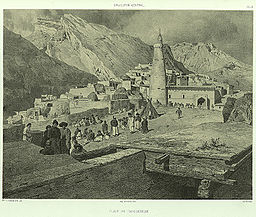Difference Between Castle and Palace
Across the globe there are castles and palaces which are viewed as some of the most beautiful and historical buildings in the world. While the word castle and palace have been used interchangeably, there are significant differences between the two architectural structures.
Castles first appeared in history between the 9th and 10th century in the Middle East and Europe. They were built as a symbol of power among the surrounding land, as well as a place where nobility can be protected from threatening attacks. Palaces are more prominent across the world and date back further than castles to the times of the Greeks and Romans. Created to house royalty and dignitaries, palaces were designed for elaborate and extravagant living, not to withstand any form of warfare.
Structurally, castles have features which are common to most other castles. Moats, gatehouses, keeps, and arrow slits in walls are all commonly seen in castle architecture. These features were not created for architectural purposes, rather to aid the fighters should enemy troops surround the castle. A palace however, is meant to incorporate architectural features which will add to the elegance of the home. Since each palace is made to tailor to the owner who lives within there is no structural commonalities between each one, rather design techniques which can be incorporated to make the home more appealing.
Castles can be built out of various materials. Common to all castles is thick walls made of stone or brick, while some early castles were made of timber logs. In order to maintain control of their resources, castles were built in areas where the lord or king can have the most influence over the people. Palaces incorporated more elaborate material than castles, using marble for the floors and walls, tiles for decoration, and even gold as a trimming. A true expression of financial wealth a palace was typically built in an area of natural beauty or a city center for all to adorn.
Some palaces and castles are still resided in by the original creator, a member or their family, or another high ranking king, queen, diplomat, or governmental leader. Today, castles and palaces if not in use are museums and some hotels, what remains true is that all are still historical points of interest.
Summary:
1.Palaces have been in use throughout the world and since early times. Castles are typically seen in the Middle East and Europe and became in use in the 9th century.
2.Castles are created to withstand an enemy attack. Palaces were meant for leisurely living, not warfare.
3.Castles were designed to fight battles and had features common to defense in time of war. Palaces are of varied design and were created to be architecturally pleasing to the eye.
4.Castles are built of stone or brick for strength. Palaces were decorated with marble and gold for appeal.
5.Today, some palaces and castles are still in use. All palaces and castles are points of interest for tourists.
- Difference Between an Atomic Bomb and a Hydrogen Bomb - May 23, 2015
- Difference Between Multiplexer and Decoder - May 21, 2015
- Difference Between Chicken pox and Small pox - June 3, 2014


This was a useful and interesting article, but it should have been checked for grammar and spelling amd particularly punctuation. Parts of it are so badly written that it’s difficult to divine their meaning.
You misspelled and as AMD in a commentary pointing out how a document should have been spellchecked… How ironic.